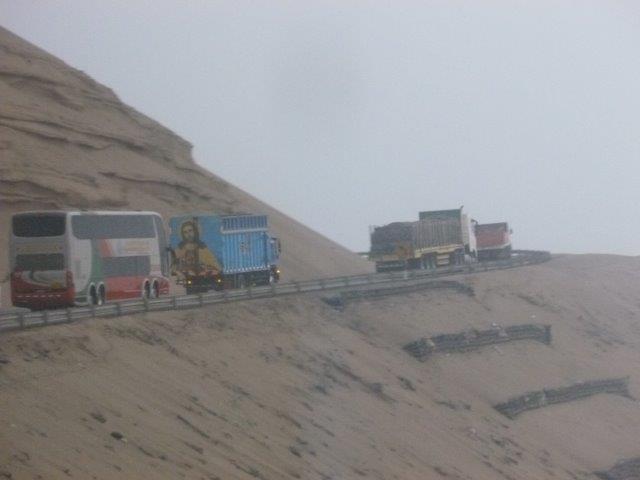(My daughter moved to Medellín, Colombia, just a few weeks before I moved to Peru. She had little time to learn any Spanish before she left.)
Dear Marta,
It's been four months since you left the States, and I remember very well what it was like for me trying to use Spanish in Guatemala after I'd been there for four months. There were some days when I would have a headache after a two-hour conversation -- not because I didn't enjoy the conversation, but because it took so much mental effort to do the translation in my head at a fast enough speed to keep up with the conversation. I wondered every day if I would ever get to the point where I could just think in Spanish, instead of having to think about how to translate the next thing I wanted to say into Spanish.
My experiences in high school (with Latin) and college (with German) had taught me that I was capable of memorizing a large number of words in another language and of learning a grammar that was completely different from English, well enough to be able to read and write in a different language. But they left me with the impression that conversation would always be difficult because my brain just couldn't perform the "lookups" in my mental dictionary at the pace necessary to sustain an ordinary conversation. I'm sure your experience with French in high school was similar.
I don't know how long it will take you to get through this torturous period of mental gymnastics, but I do know that you'll soon start to see signs that something in your brain is changing. The first sign might be a dream, like it was for me, where the dialog is in Spanish. Or you might suddenly remember that you need to do something, but remember it in Spanish. Or you'll want to say a word in English but only be able to remember how to say it in Spanish.
There's an awful lot of circuitry up there that needs to be rewired before your brain can process Spanish the same way that it processes English. You have to reach a certain threshold of neurons all working together before Spanish will start to seem as natural as English. But I can promise you that it will happen! You'll know that it's starting to happen when your "bad Spanish detector" starts working. You'll be saying something, and as soon as you hear what you've said you'll know that it just "sounds wrong". It may seem like you're regressing because you're noticing a lot of errors, but you're not. Mostly they're the same errors you've always been making, but now your brain is tuned to recognize Spanish grammar, so you notice all those mistakes.
You'll continue to have days where you doubt that it's really possible to become fluent, where you think that "maybe you're just not one of those people who can do it". But then you'll remember a conversation you had with a little old lady at the bakery, or an encounter with a child in the park, that you know you could never have had if you didn't speak their language. And you'll want more of those experiences, and that's what will sustain you through this period of frustration.
And when you have children, you'll be able to give them the enormous gift of bilingualism. They won't have to struggle as you did, because they'll learn both languages at the same time.
So hang in there, and get lots of sleep. Your brain does most of its reconstruction work while you're sleeping. I know that you won't believe this right now, but you're even going to get to the point where all of those "fancy" tenses that you're afraid to touch right now will come rolling right off your tongue without any effort.
Love,
Dad















